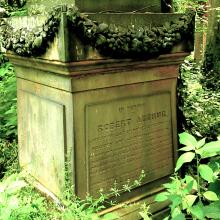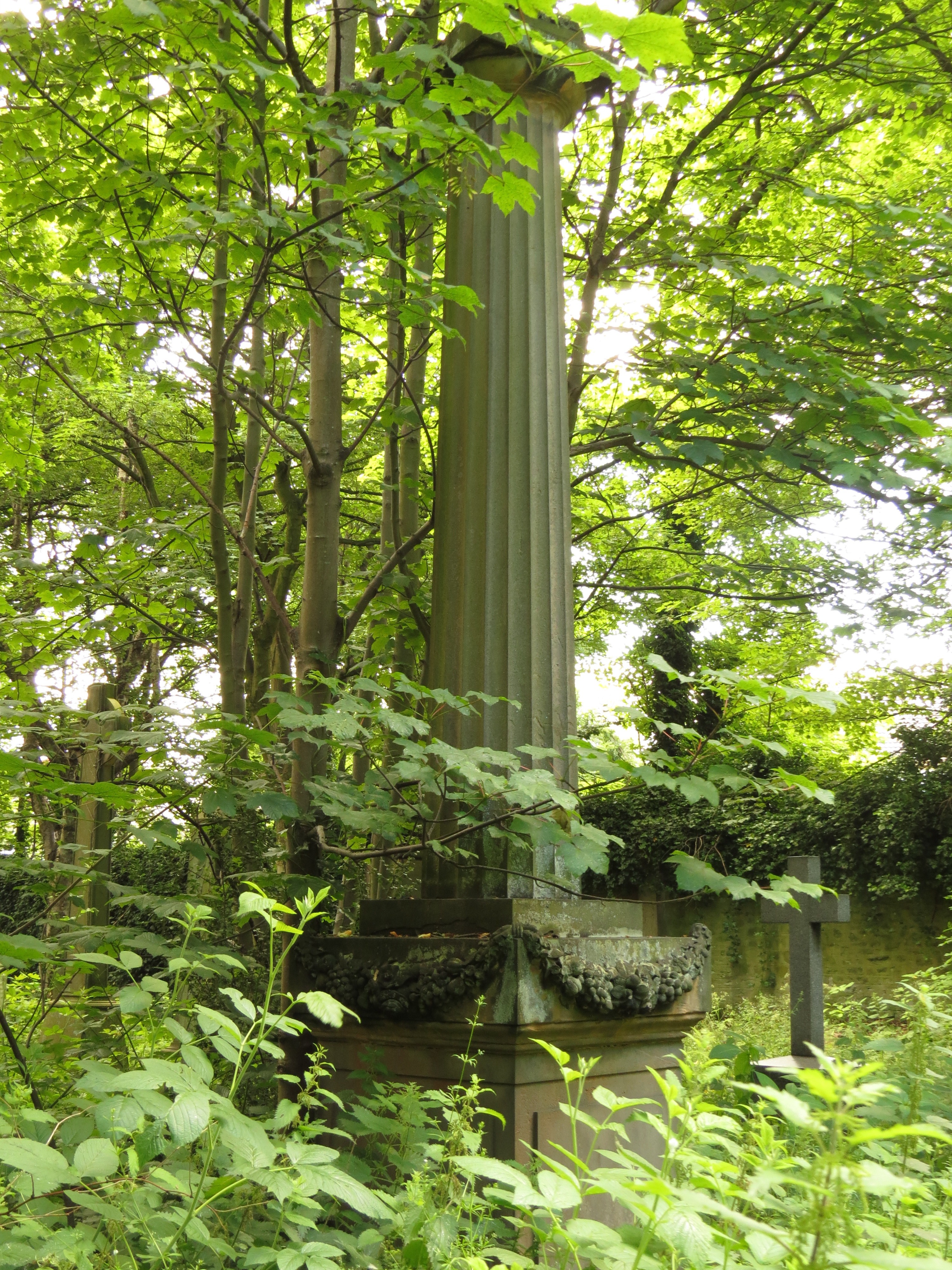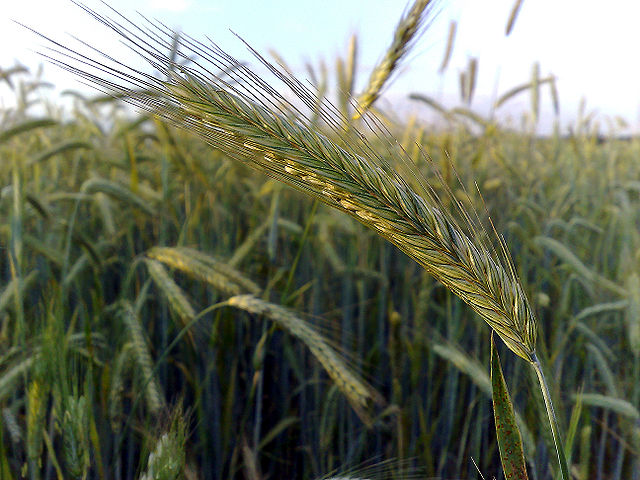
Half-submerged in the wonderfully lush vegetation of Warriston Cemetery stands a fruitful monument to Robert Arthur.
It's pleasant to think that this (at the last) local man would have appreciated the beauties of his new surroundings and their unstoppable growth each summer.
More likely, though, is that he's now spinning down there at the superabundance of weeds.
His inscription reads:
IN MEMORY
OF
ROBERT ARTHUR,
LATE TRAVELLER TO MESSRS DICKSONS & CO.
NURSERY AND SEEDSMEN EDINBURGH.
HIS KIND AND AMIABLE DISPOSITION AND UNWEARIED
ENDEAVOURS TO PROMOTE THE INTEREST OF GARDENERS
ENDEARED HIM TO A NUMEROUS CIRCLE OF FRIENDS
WHO UNITE IN ERECTING THIS TRIBUTE OF RESPECT.
BORN PARISH OF SORN AYRSHIRE 9TH AUGUST 1811
DIED AT EDINBURGH 15TH DECEMBER 1846.


In January 1838, the Edinburgh Weekly Journal noted that 52 varieties of rye grass grown by Arthur in North Berwick and exhibited at Lawson's Agricultural Museum in Hunter Square in the capital 'deserve to be particularised'.
In 1843, the Gardener's Magazine and Register of Rural and Domestic Improvement lists him as one of those 'eminent gardeners' who subscribed to a bust for the Caledonian Horticultural Society of the remarkable Broughton botanist Dr Patrick Neill.
For how long and in exactly what capacity Arthur was employed by Dicksons & Co is not clear. However, the firm had strong local connections given that for many years its head office was at 1 Waterloo Place, and that it maintained a large nursery stretching between the northern end of today’s Royal Botanic Garden and Ferry Road. One can see the nursery in W. & A.K. Johnston's 1851 Plan of Edinburgh and Leith.

According to the Edinburgh Cemetery Company's rather terse Record of Interments, Robert Arthur died of ‘disease in head’ at the age of 35. It is from this source, too, that we learn his funeral proceeded to Warriston from No. 16 Hart Street. Preliminary indications are that this was a lodging house; Arthur is unlikely to have been wealthy.
By happy coincidence, Arthur's birthplace – the small Ayrshire village of Sorn – has more recently established an excellent track record in the Britain in Bloom competition. Among many awards, it has won a ‘Highly Commended Certificate’ several times and ten years ago secured Gold in the 'Small Villages' category. AM
[Rye grass image – Wikimedia Commons: LSDSL Bitte nennen Sie mich als LSDSL]